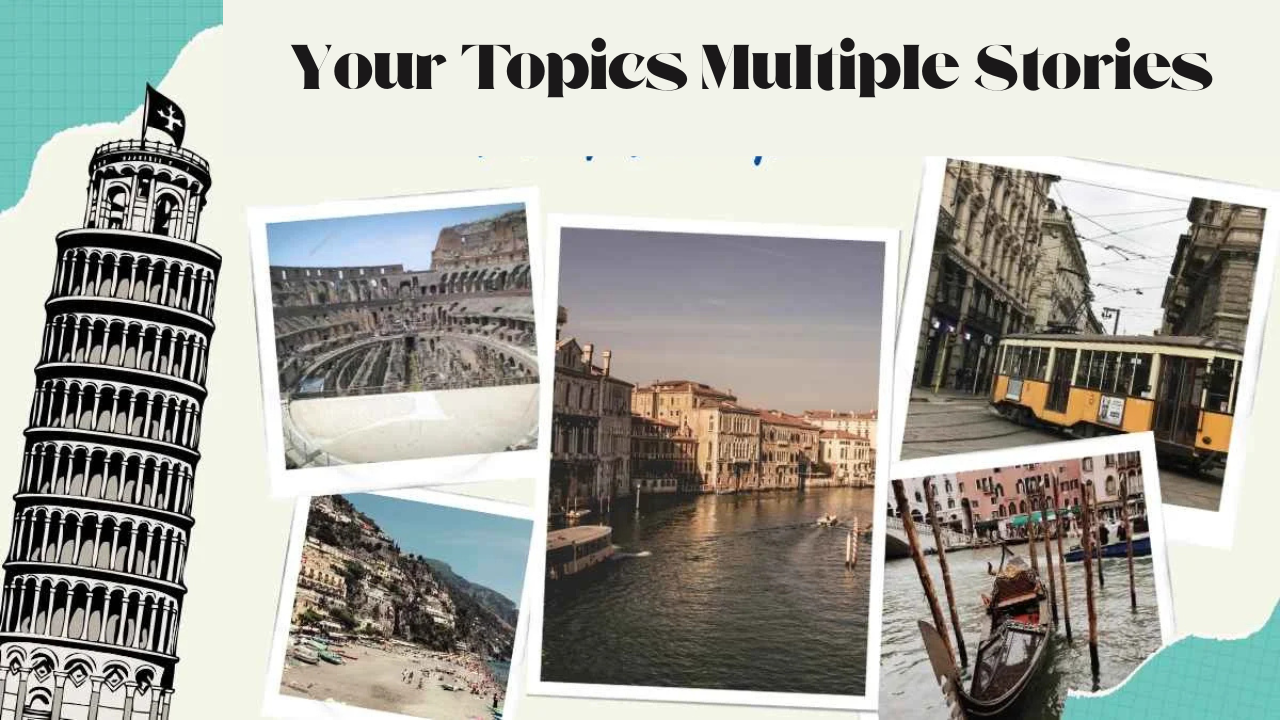Storytelling is a timeless craft that transcends cultures, generations, and media formats. While traditional stories often center around a single theme or plotline, there is growing interest in narratives that intertwine Your Topics Multiple Stories. These multi-dimensional stories are not just complex—they’re more reflective of real life, which is rarely one-dimensional. Through the power of narrative, individuals can explore diverse ideas and experiences in a single storyline, creating a richer and more engaging tapestry.
In an age where information is abundant and attention spans are fleeting, the ability to capture and retain interest is invaluable. Multi-topic storytelling provides a dynamic way to engage readers, listeners, or viewers. Whether it’s blending personal growth with historical insight or combining technology with philosophy, this storytelling technique opens doors to creativity and connection. This article explores the fundamentals, strategies, and real-world applications of multi-topic storytelling.
By the end of this read, you’ll understand how to identify threads between disparate ideas and craft them into cohesive, compelling narratives. Your Topics Multiple Stories You’ll also learn about the tools and platforms that can help bring your multifaceted stories to life. Ultimately, this guide aims to inspire you to experiment with your storytelling style, embrace complexity, and communicate your ideas with more depth and resonance. Whether you’re working on Your Topics Multiple Stories or exploring multiple stories, this article is your starting point.
Understanding Multi-Topic Storytelling
What Is Multi-Topic Storytelling?
Multi-topic storytelling refers to the narrative technique of integrating multiple themes, subject areas, or plotlines into a single, cohesive story. Unlike traditional storytelling, which often follows a linear path focused on a singular issue or journey, multi-topic stories navigate across different terrains. This approach is increasingly popular in memoirs, journalism, content marketing, and even academic writing, as it mirrors the complexity of real-world experiences.
For example, a memoir might simultaneously explore the author’s family history, mental health journey, and professional development. Your Topics Multiple Stories A blog post could blend travel experiences with sustainability practices and cultural critique. The aim is not to scatter the reader’s focus but to create a richer narrative tapestry that reveals interconnected truths.
Benefits and Challenges
The benefits of multi-topic storytelling are manifold. First, it allows for a broader engagement with diverse audiences. Readers interested in one aspect of the story may find themselves drawn into other areas they hadn’t considered before. Second, it encourages deeper emotional and intellectual engagement by mirroring the multifaceted nature of human experience. Third, it enhances the creative freedom of the storyteller.
However, this approach does come with its own set of challenges. Maintaining narrative coherence is perhaps the most significant hurdle. Without a unifying theme or emotional anchor, stories risk becoming fragmented or overwhelming. Additionally, balancing different tones, voices, or perspectives can be difficult, especially for novice writers. Yet, with thoughtful planning and execution, these challenges can be turned into opportunities for innovation.
Strategies for Crafting Compelling Multi-Topic Stories
Finding the Common Thread
Every compelling multi-topic story starts with a unifying thread. This could be a central theme like resilience, identity, or transformation that links all topics together. Alternatively, the connection might be chronological or spatial—such as events that occur simultaneously in different parts of the world. Regardless of the method, the goal is to create a sense of cohesion.
One effective technique is to use emotional touchpoints that resonate across various storylines. For example, a narrative about climate activism and personal loss might connect through the theme of healing. Similarly, a business case study combined with a travelogue could hinge on the theme of discovery. Identifying this common ground early on helps in structuring the story and maintaining reader interest.
Structuring Your Narrative
When structuring multi-topic stories, writers can use various narrative devices to maintain flow and clarity. Parallel timelines, for example, allow two or more stories to unfold side-by-side, often highlighting similarities and contrasts. Flashbacks and foreshadowing can also be used to deepen the narrative and draw connections between different plotlines.
Frame stories—where one story serves as the setting for another—are another effective technique. This is commonly seen in literary classics and films, where the main narrative wraps around a series of smaller, interconnected tales. These structural techniques not only enhance storytelling but also provide readers with mental signposts to navigate the complexity of multiple themes.
Real-Life Applications and Story Examples
Personal Growth Narratives
Multi-topic storytelling is especially powerful in personal growth narratives. These stories often intertwine personal, professional, and emotional development into a single arc. For example, someone might recount their journey from a corporate job to becoming a social entrepreneur, all while managing a chronic illness and exploring spiritual beliefs. Each thread adds depth and relatability to the story.
The richness of these stories lies in their authenticity and vulnerability. Readers not only learn about the external events but also get a window into the internal transformations that occur. This multi-layered approach makes the narrative more engaging and emotionally resonant, offering readers multiple points of entry into the story.
Cultural, Historical, and Creative Examples
Writers and content creators often use multi-topic storytelling to explore cultural and historical issues. Your Topics Multiple Stories A podcast might weave together interviews, personal anecdotes, and historical research to explore a community’s evolving identity. Similarly, documentaries often juxtapose current events with historical context to offer a more comprehensive understanding.
In creative writing and entertainment, shows like This Is Us or novels like Cloud Atlas are prime examples of successful multi-topic storytelling. They traverse timelines, settings, and characters while maintaining emotional coherence. These stories challenge conventional formats and encourage audiences to think more broadly and deeply about the narratives they consume.
Tools and Platforms to Share Multi-Topic Stories
Thanks to digital advancements, creators have more tools than ever to share complex stories. Writing platforms like Scrivener help organize content with multiple threads. Blogging platforms such as Medium and Substack offer writers a space to serialize and contextualize their work. Podcasting tools like Anchor and video editing software like Adobe Premiere enable the blending of audio-visual elements for layered storytelling.
Social media platforms are also evolving to accommodate these stories. Instagram Stories and TikTok series allow creators to post episodic content that spans multiple themes. Interactive platforms, such as digital storytelling apps and web documentaries, further push the boundaries, enabling users to explore various paths within a single narrative experience.
Conclusion
Your Topics Multiple Stories storytelling is more than a creative technique; it’s a powerful way to reflect the multifaceted nature of human experience. By interweaving different themes, topics, and perspectives, storytellers can create narratives that are not only engaging but also deeply meaningful. This approach challenges traditional boundaries and encourages both writers and readers to think beyond linear constructs.
As you explore your own storytelling style, don’t shy away from complexity. Use it as a canvas to express ideas, experiences, and emotions in their full richness. With thoughtful planning and the right tools, you can craft stories that resonate on multiple levels and leave a lasting impact. So dive into your topics, embrace the beauty of Your Topics Multiple Stories, and share your voice with the world.
Frequently Asked Questions (FAQs)
Can I write a story with completely unrelated topics?
Yes, but it’s crucial to find a thematic or emotional thread to maintain coherence and engagement.
How do I keep readers engaged when switching between themes?
Use consistent tone, clear transitions, and recurring motifs to guide readers through your narrative.
What genres work best for multi-topic storytelling?
Memoir, historical fiction, documentaries, creative non-fiction, and even marketing content benefit greatly from this approach.
Do I need to follow a specific structure for it to work?
No strict structure is required, but using proven narrative techniques like frame stories or parallel timelines can help.
What are some good examples of multi-topic narratives in popular media?
Shows like This Is Us, movies like Babel, and books like Cloud Atlas are excellent examples.
You May Also Read: https://topbuzusa.com/make1m-com-millionaire-life/





